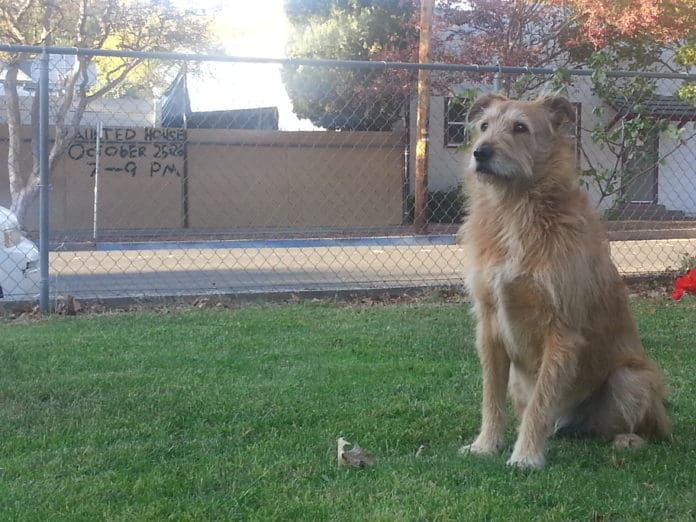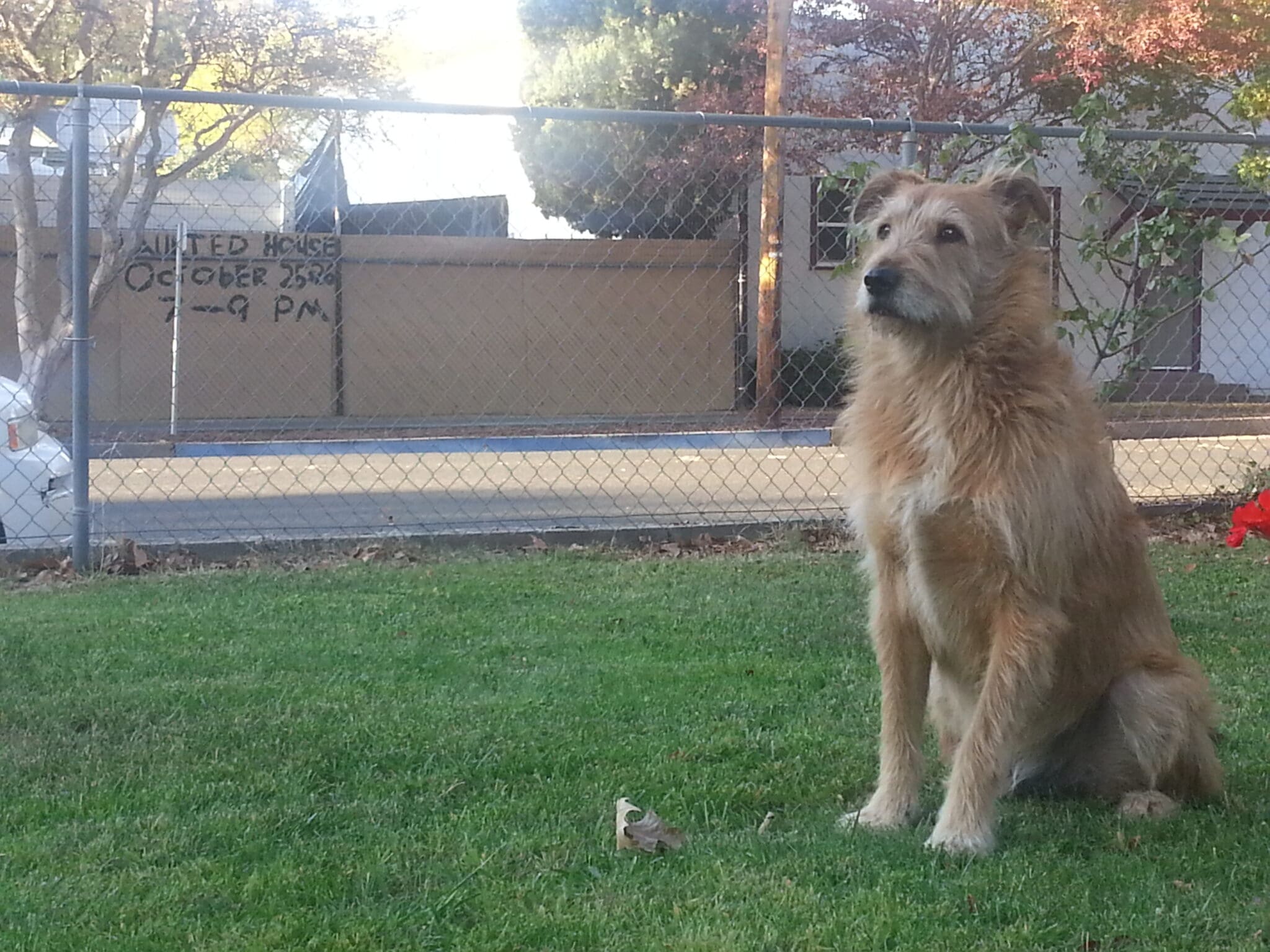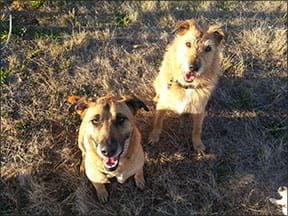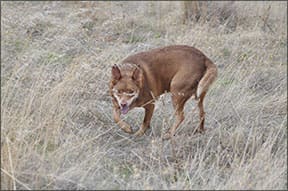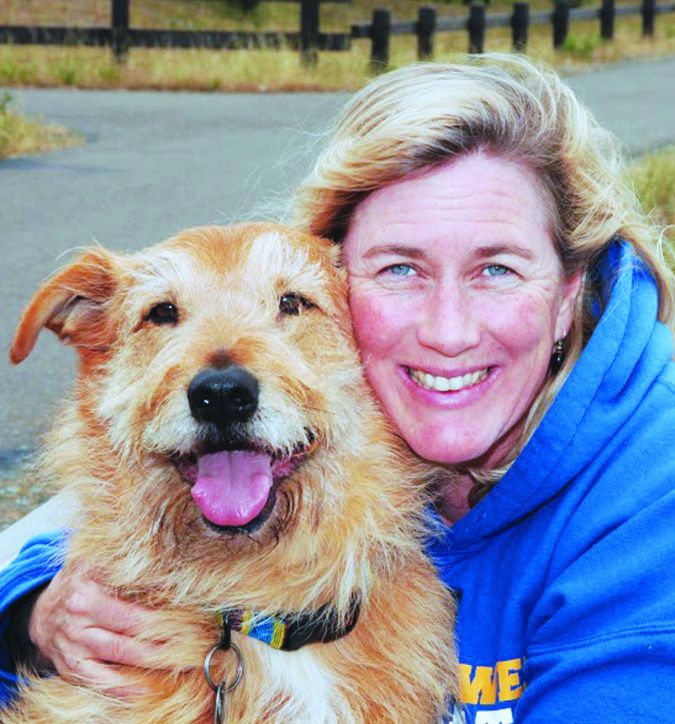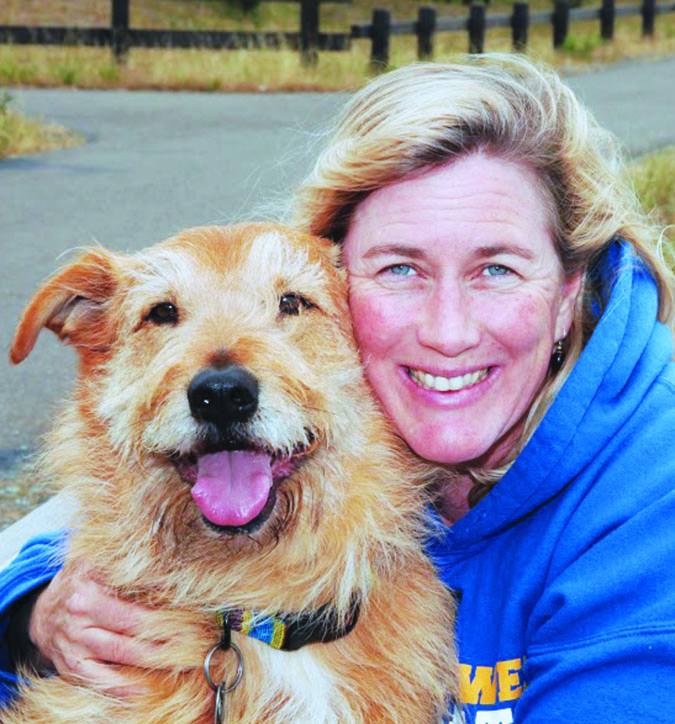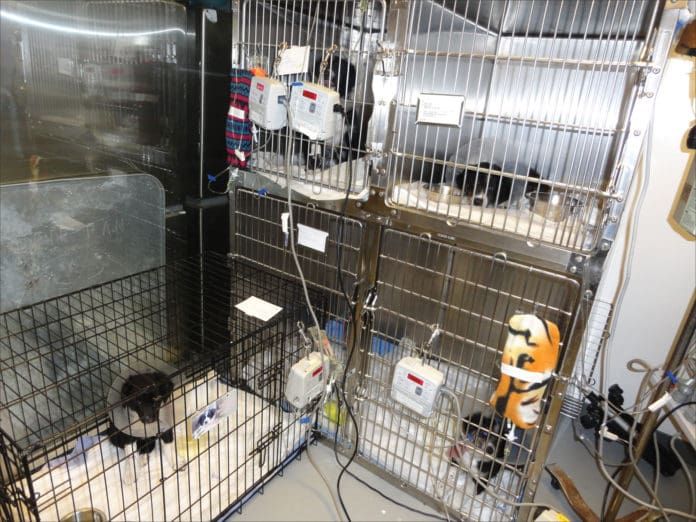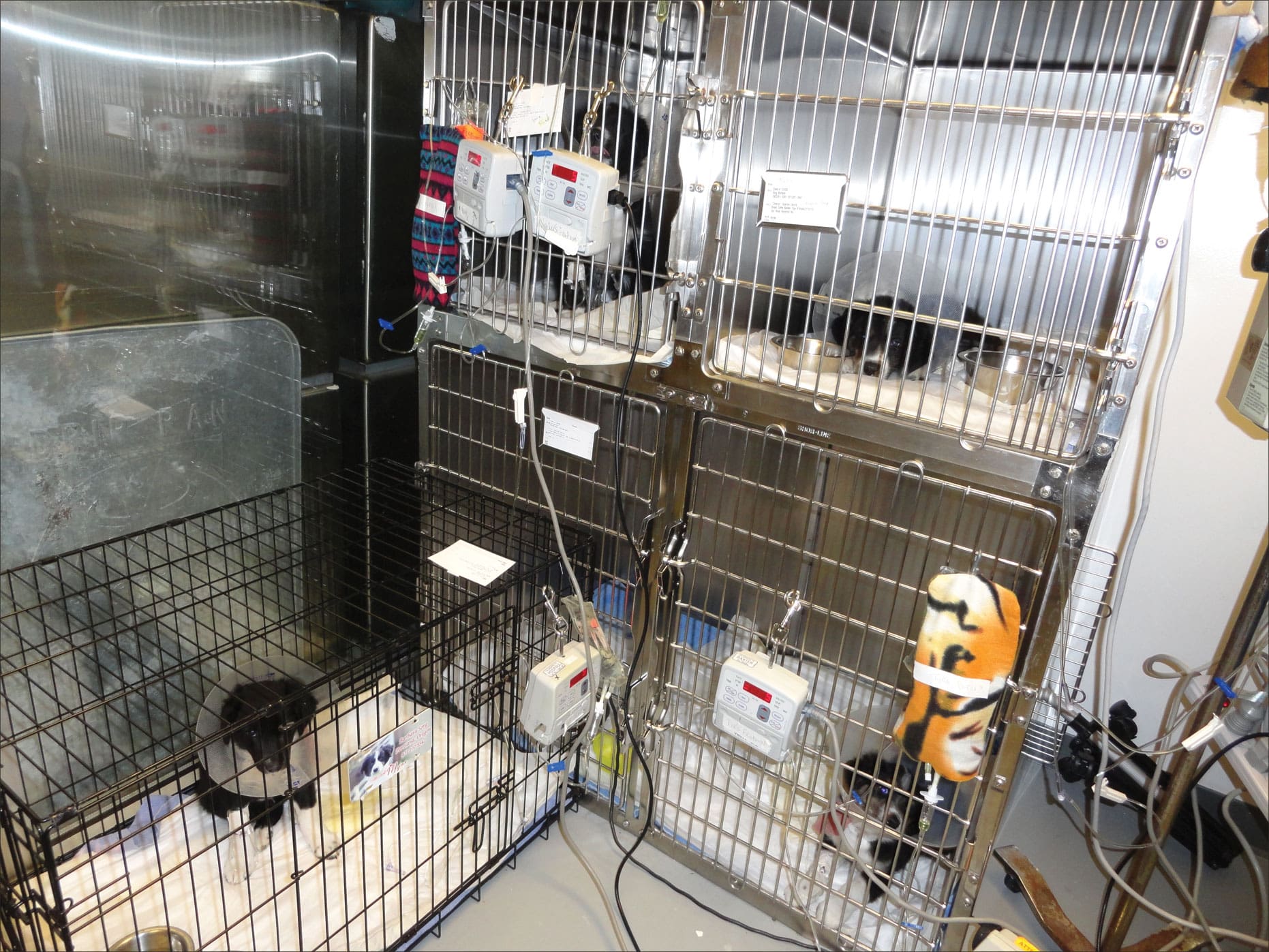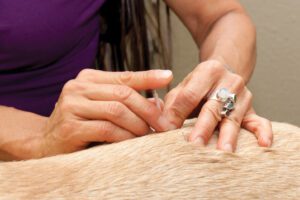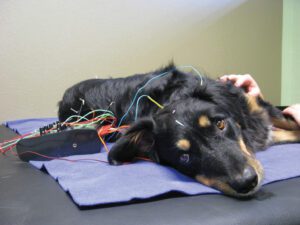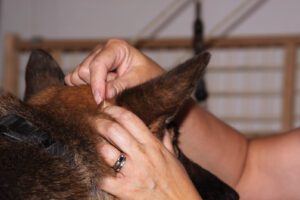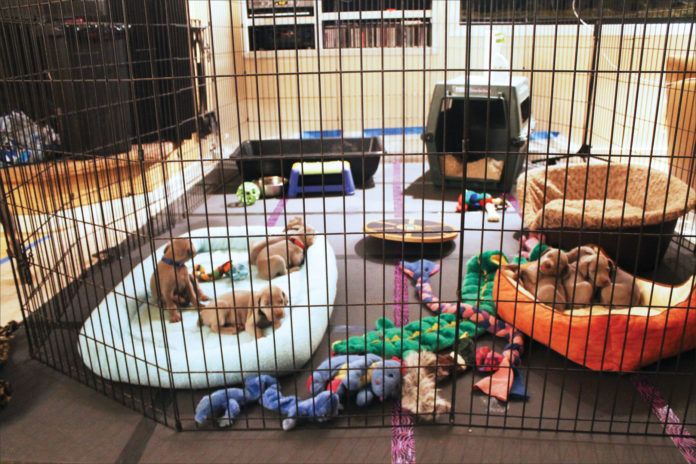Whole Dog Journal readers often try techniques and products described in the magazine, but sometimes years go by before we need something we read about, or it disappears from the market, or we have trouble finding it, or we simply forget all about it. Last month we revisited systemic oral enzymes and EMT gel, and our September issue revisited green tripe, Seacure, and Willard Water. Here are three more go-to products featured in previous issues that might now be perfect for you and your dog.
Pellitol Ointment
Nine years ago, we described a smoky-smelling pink ointment that worked wonders for seriously infected ears: Pellitol (see “Chronic Ear Infections in Canines,” WDJ June 2004). Pellitol contained zinc oxide, calamine, bismuth subgalate, bismuth subnitrate, resorcinol, echinacea fluid extract, and juniper tar. These ingredients are both disinfecting and adhesive, so that as the ointment gradually dried and shrank (a process lasting several days), it healed ulcers, dried pus and debris, and reduced bacterial growth. In addition to being effective, this apply-it-and-leave-it approach spared patients the discomfort of repeated ear-cleaning treatments.
We learned about Pellitol from holistic veterinarian Stacy Hershman of Hastings-on-Hudson, New York, who became interested in ear infections while working as a veterinary technician in her teens. “This is a subject that isn’t covered much in vet school,” she told us. “I learned about treating ear infections from the veterinarians I worked with over the years. Because they all had different techniques, I saw dozens of different treatments, and I kept track of what worked and what didn’t.”
Chronic ear infections are the bane of long-eared dogs, swimming dogs, recently vaccinated puppies, old dogs, dogs with an abundance of ear wax, and dogs with allergies, thyroid imbalances, or immune system disorders. In other words, they are among the most common recurring canine problems.
Dr. Hershman’s maintenance program for healthy ears involves gentle cleaning with cotton balls, cotton swabs, and room-temperature green tea or an alcohol-free acidic ear cleaner. Mild ear inflammation can be treated with careful flushing.
But if the infection is serious, she takes a different approach. When she began her veterinary practice, Dr. Hersh-man met dogs who wouldn’t let anyone touch their ears. “I knew that nothing I’d learned in vet school was going to help them,” she says, “so I thought back to all the treatments I’d seen over the years. The one that seemed most effective was a combination of boric acid and a thick, old-fashioned ointment that looks like pink toothpaste. I couldn’t remember its name, but I never forgot how it smelled – really peculiar, like burnt embers.”
The ointment was Pellitol, and as soon as she tracked it down, Dr. Hershman combined it with boric acid. “Like the ear powders I learned about from groomers,” she explains, “boric acid dries and acidifies the ear. Yeast and bacteria are opportunistic organisms that die in a dry, acidic environment. They thrive where it’s moist, dark, and alkaline.”
Because boric acid is toxic (note warnings on the label), it should not be inhaled or swallowed. Shielding the face is important and usually requires a helper, someone who can hold the dog’s head steady while protecting the eyes, nose, and mouth.
Experimenting with her own dogs and dogs at the animal shelter where she volunteered, Dr. Hershman placed two or three pinches of boric acid powder in each infected ear unless it was ulcerated, bleeding, or painful. “Being acidic,” she explained, “boric acid might irritate open wounds. In that case, I would use the Pellitol alone. Otherwise, a pinch or two of boric acid was an effective preliminary treatment.”
After applying boric acid, she would fill the ear with Pellitol and let it work. Within a week, the dried ointment would fall out of the dog’s ear, leaving it cleaner and far less inflamed.
The Replacements
When its developer retired and closed his business, Pellitol disappeared. Fortunately for its fans, new versions of Pellitol are manufactured by compounding pharmacies.
Dr. Hershman orders Pell Otic ointment from Wedgewood Pharmacy in Swedesboro, New Jersey, which packages the ointment in 15-milliliter syringes that retail for $24. This ointment contains zinc oxide, calamine, bismuth subnitrate, resorcinol, juniper tar, and bismuth subgallate, which are (except for echinacea) the same ingredients as Pellitol in a slightly different formula. Wedgewood Pharmacy ships to all states except North Carolina. Pet owners can order Pell Otic ointment by phone or online, but orders must be accompanied by a veterinarian’s prescription.
Dr. Hershman likes the new product. “Instead of a tube, it comes in a syringe that you dial, which makes it more economical, and it has a convenient long nozzle for applying it deep in the vertical ear canal,” she says. “It works the same as Pellitol. It’s just more brown than pink in color, possibly due to less calamine and more bismuth. It still smells good, like burnt embers.”
She recommends turning the dial once for 1 milliliter per ear unless you’re working with larger ear canals, as with Coonhounds, Spaniels, or Basset Hounds, in which case she uses 2 ml per ear. “There is a cap for the end of the syringe so it will not dry out,” she says, “and it is actually a lot less messy with the syringe than a tube. The metal Pellitol tubes would break and dry up and the ointment would be wasted. This is a better arrangement.”
Like Pellitol, Pell Otic ointment is sticky. “I tell people to protect their furniture for a day or two. The ointment will stick to anything it touches, and when you fill the ear, it can stick to the outside of the ear or the dog’s face. That excess will dry and fall off. You can remove it with vegetable oil, but leave the inside of the ear flap alone.”
Another version of Pellitol is available from Specialty Veterinary Compounding Pharmacy in Stafford, Texas. Re-ca-litol Otic Ointment contains resorcinol, bismuth subgallate, bismuth subnitrate, zinc oxide, calamine powder, juniper tar, glycerin, and petrolatum.
Re-ca-litol Otic Ointment is available in 20-gram toothpaste-like tubes costing $24.63. Orders accompanied by a veterinarian’s prescription can be placed by phone or online. Specialty Veterinary Pharmacy does not ship to Arizona, Arkansas, Kentucky, Maryland, Nebraska, North Caroline, or Virginia.
“Pellitol-type ointments can completely cure mild ear infections,” says Dr. Hershman, “but for severe purulent (pus-producing), ulcerative, long-standing Pseudomonas and Proteus bacterial infections, the ointment by itself may not be enough. Sometimes conventional antibiotics with anti-inflammatory or anti-fungal ingredients have to be alternated with the ointment treatment since these bacteria are difficult to eradicate. In severely resistant cases, I go back and forth between the ointment and ear powders containing boric acid and zinc oxide along with conventional medications. But even in severe cases, Pell Otic ointment makes a big difference.”
Continue to page 2 to read about Jakes Canine Remedy and more replacements
Note: If your dog develops an ear infection for the first time, or if his condition seems especially severe or painful, consult your veterinarian to rule out a tumor, polyp, or something else that requires medical attention.
For detailed ear-cleaning and ear-flushing instructions, see “Chronic Ear Infections in Canines,” June 2004.
Aromatherapy products for dogs have become a big business, with almost as many essential oil blends, hydrosols, and carrier oils marketed for canines as for their human companions. For an introduction to canine aromatherapy, see “Smell This” (December 2004), “Essential Aromatherapy” (January 2005), “Canines in a Mist” (April 2005), and “Healing Oils for Your Dog” (August 2005).
One of the most versatile and effective aromatherapy blends for dogs is Jake’s Canine Remedy, a topical spray that helps heal and prevent skin and coat problems.
Years ago, Colorado aromatherapist Frances Fitzgerald Cleveland of FrogWorks, which manufactures products for pets and people, was out of town when her dog, Jake, developed a hot spot. The steroid shot he received caused kidney failure and Jake died. In his memory, Cleveland combined purified water, apricot kernel oil, and a proprietary blend of essential oils. Jake’s Canine Remedy can be sprayed onto wet or dry dogs, brushed into the coat, used as an ear flush, or dabbed onto skin irritations, including hot spots and lick granulomas (see “Canine Wounds Deemed ‘Hot Spots,’” September 2006).
“I chose essential oils that smell good to dogs and have anti-inflammatory, analgesic, itch-relieving, anti-dermatitic, antibacterial, bacteriostatic, anti-viral, anti-fungal, soothing, healing, and calming effects,” she explains.
One of Cleveland’s test dogs was her black Labrador-Golden Retriever mix, Oscar. “Oscar swam every day, and I always sprayed him with Jake’s Remedy. He never had a hot spot or any type of skin irritation,” she says. Oscar passed away last July at age 14, and her three-year-old Lab-mix, Indie, continues the tradition.
In our 2006 hot spot article, Shelley Voorhees of Littleton, Colorado, reported that when her champion Rottweiler was a blood donor, he had a severe reaction to the disinfecting scrub that was used. “He developed a hot spot that covered his neck and chest,” she said. “After a course of antibiotics, the hot spot was still very inflamed and still oozing. I tried Jake’s Remedy, and within 48 hours the oozing stopped. The hot spot healed within a week and his hair quickly grew back.”
More recently, in Dallas, Texas, Sue Murphy’s 6-year-old yellow Labrador Retriever, Louise, developed a serious ear infection. “I was not aware of how bad it was because there wasn’t any smell,” she says. “Her ear continued to itch and she continued to scratch until the ear and ear flap became as red as a tomato. She tested positive for yeast and bacteria.”
Louise’s vet sent her home with ointment to be used with an ear flush. As Louise hates having her ears cleaned, Murphy called Cleveland for advice.
“Frances suggested that I flush the ear with Jake’s Canine Remedy,” she says. “It was a miracle on many counts. Louise was willing to let me put it in her ear, and when I was done, she put her paws on my shoulders and kissed my face! But the most amazing thing was that within two hours, Louise’s ear was almost her natural pink.”
Murphy continued to use Jake’s Remedy for a few more days, and Louise’s ears returned to their healthy state. She never had to use the prescribed ointment again. “Every morning Louise lets me check her ears and thanks me with a big kiss,” she says. “Now I spray it on her front paws to alleviate itching and to keep her from chewing on her paws. This stuff is awesome!”
California resident Jim Rounsavell’s eight-year-old German Shepherd Dog, Gretchen, has epilepsy, incontinence, a completely replaced left hip, and skin disorders. “She developed a rash from her prolonged use of steroids under a veterinarian’s direction,” he says. “We were never told that this steroid should not be used for long periods.”
When the rash around Gretchen’s genitals and lower abdomen continued to worsen, Rounsavell took Gretchen to the Veterinary Medical Teaching Hospital (VMTH) at the University of California, Davis, School of Veterinary Medicine. “The specialist said he sees only one dog every two years with a condition as severe as hers. He recommended that we work to reduce Gretchen’s weight from 122 pounds to around 100 pounds and then schedule surgery to remove the area that refused to heal.”
A FrogWorks distributor recommended Jake’s Canine Remedy and told Rounsavell that he could expect to see results in seven days. “We started using the product,” he says, “and Gretchen’s sore area became quite moist. We didn’t know what to expect so we called Frances, who informed us that this was part of the healing process. As promised, by the end of a week we saw results, and over the next two to three weeks her condition improved even more.” Rounsavell did not have to bring Gretchen back to the VMTH for the much more drastic procedure. Instead, he says, “Jake’s Remedy came to our rescue. I want everyone to know about this product.”
Kari Filburn, who lives near Portland, Oregon, purchased Jake’s Canine Remedy for her dog Koda, who had hot spots on his tail and legs. “It has really helped them heal,” she reports. In addition, Koda enjoyed Merlin’s Magic Calming Potion, another FrogWorks product. “I sprayed it on a washcloth for him and he carried it around the house. He rubbed his head all over it, then rested against the washcloth – very calm!”
Merlin was a black Lab-Great Dane adopted by Cleveland in 1999 when he was a year old. He had been severely abused and, when rescued, had a fractured hip and other injuries. “I used many essential oils to help him adjust to his new home and get over his past experiences,” says Cleveland. “A dog day care asked me to make a calming spray. . . . Then it hit me. I would use all the oils I used for Merlin when we first brought him home. The blend contained vetiver, grapefruit, frankincense, ylang ylang extra, and Roman chamomile essential oils in a base of water, apricot kernel oil, and dispersa, which is an all-natural emulsifier containing vitamins C and E. It worked, and the doggy day care was happy. In 2010, when Merlin passed away, I made it an official product to honor his memory.”
Continue to page 3 for another FrogWork’s blend and information on coconut oil.
Another FrogWorks blend is Garth’s Canine Sneezing Remedy, which is designed to help dogs with sneezing and reverse sneezing conditions. “It’s a synergistic blend of basil, Roman chamomile, frankincense, and peppermint oils in a base of expeller-pressed safflower oil,” explains Cleveland.
“Garth’s Canine Sneezing Remedy is fabulous,” says Sue Murphy. “When Louise is having bad allergy days, she will wake with a thick coating in her eye, which I remove with a tissue. I apply Garth’s Remedy to her head and her eyes remain clear all day. I also apply it before bed so that she wakes up with a lot less stuff in her eye, just a little in the corner. I am 100 percent sold on this product for eye relief when allergies are in the air. I’m so glad I don’t have to put steroids in her eyes.”
See “Resources,” at the end of the article for a special offer on FrogWorks products for WDJ readers.
Coconut Oil
Eight years ago, when we first described coconut oil (see “How Coconut Oil Benefits Your Dog’s Health,” October 2005), it was hard to find. Now health food stores, supermarkets, and even some pet supply stores carry a variety of coconut oils from around the world.
Coconut oil fell out of favor during the second half of the 20th century because it’s a source of saturated fat. But the polyunsaturated vegetable oils that replaced it caused more harm than coconut oil ever did, and coconut oil’s medium-chain fatty acids (MCFAs), also known as medium-chain triglycerides (MCTs) have been shown to have significant health benefits, so this traditional food has made a comeback.
Coconut oil can be added to meals, used as a cooking oil, or taken as a nutritional supplement. According to its advocates, coconut oil:
– Reduces the risk of cancer and other degenerative conditions.
– Improves cholesterol levels and helps fight heart disease.
– Improves digestion and nutrient absorption.
– Heals digestive disorders like Crohn’s disease, irritable bowel syndrome, ulcers, and colitis.
– Contains powerful antibacterial, antiviral, and antifungal agents that prevent infection and disease.
– Relieves arthritis.
– Prevents and treats yeast and fungal infections.
– Prevents and treats viral infections.
– Helps balance the body’s metabolism and hormones.
– Promotes normal thyroid function.
– Helps prevent osteoporosis.
– Rejuvenates the skin and protects against skin cancer, age spots, acne, and other blemishes.
– Reduces allergic reactions.
In addition, coconut oil can be applied topically to speed the healing of cuts, burns, abrasions, and other wounds; to improve the condition of skin and hair; to deodorize whatever it touches (some people brush their teeth with it or use it as an underarm deodorant); and to clear up warts, moles, psoriasis, dandruff, precancerous lesions, athlete’s foot, jock itch, diaper rash, ringworm, vaginal yeast infections, and toenail fungus.
All of this is excellent news for people and their dogs, for most of coconut oil’s human benefits are shared by canines. And most dogs love the taste, which makes feeding coconut oil and other coconut products easy and pleasant.
There are two main types of coconut oil. The first, refined coconut oil (often labeled RBD – “refined, bleached, and deodorized”), is made from copra, or dried coconut meat, then treated to remove impurities. Most RBD coconut oil is inexpensive, bland, and odorless. It doesn’t contain all of the nutrients found in unrefined oil, its fragrance and flavor are different, and in most cases the coconuts used to produce it are of low quality and chemicals like chorine and hexane are used in the refining process. Some brands of refined coconut oil are labeled for use as a skin and hair care product.
Unrefined or “virgin” coconut oil, which is made from fresh coconuts, has culinary and health experts excited. Pressed by hand using traditional methods or manufactured in state-of-the-art factories, virgin coconut oil retains most of the nutrients found in fresh coconut.
In traditional methods, coconut meat is heated or baked until dry and then pressed, or fresh coconut milk is pressed from the meat and then heated to remove its water content, or freshly pressed coconut milk is allowed to ferment for 24 to 36 hours, during which the oil separates from the water. In modern factories, expeller-pressed coconut milk is centrifuged and vacuum-evaporated to remove water. Other methods of removing water from coconut oil include refrigeration and the use of enzymes.
The result of these traditional and modern manufacturing methods is an assortment of coconut oils in a range of flavors, prices, and quality.
Depending on temperature, coconut oil will be solid or liquid. Below 75º Fahrenheit, coconut oil is solid and white, like lard or vegetable shortening, and it is sometimes called coconut butter. At 76º F and above, coconut oil is a transparent liquid.
Good-quality oil is colorless when liquid and pure white when solid, never yellow or pink, and it should not contain any residue or have an “off” or rancid odor. “Many people complain that coconut oil makes their throat feel scratchy or causes a burning sensation,” says Bruce Fife, ND, who has written several books about coconut oil. “The catch in the throat is a sign of poor quality. Some of these oils have a roasted or smoky flavor and aroma, which is another indication of poor quality, as it comes from smoke that contaminates the oil during heat processing.”
The newest coconut oil products are liquid coconut oil and MCT oil. Plain coconut oil contains 62.5 percent medium chain fatty acids (MCFAs), while liquid coconut oil contains 93 percent, and MCT oil contains 100 percent.
“While 100 percent MCFAs may sound impressive,” says Dr. Fife, “there is a drawback. MCT oil contains only two medium chain fatty acids (caprylic and capric acids). It has no lauric acid, which is the most important of the fatty acids. Lauric acid is the most potent antimicrobial fatty acid and provides the greatest degree of protection against infection and disease. Similarly, liquid coconut oil consists of over 81 percent of the same two MCFAs as MCT oil, with only 11.5 percent lauric acid and very little caprylic and myristic acids, which also have antimicrobial properties.”
In addition, liquid coconut oil and MCT oil are far more expensive than plain coconut oil.
It’s Good For Dogs
We’re not aware of any clinical trials of coconut oil for canine maladies of any kind, but the anecdotal evidence is impressive. Reports published on Internet forums describe how overweight dogs become lean and energetic soon after coconut oil is added to their diets, or their shabby-looking coats become sleek and glossy, and dogs with arthritis or ligament problems grow stronger and more lively.
Even dogs with serious diseases have improved. In one case, a Doberman Pinscher with severe Wobblers made a dramatic recovery in less than a week after coconut oil was added to his diet. In another case, coconut oil helped a dog recover from valley fever (Coccidioides), a fungal infection transmitted by soil spores in the Southwest.
Other reports involve itchy skin, cuts, wounds, rashes, lesions, skin tags, warts, and hot spots. Dogs with flea allergies, contact dermatitis, or other allergic reactions typically stop scratching soon after coconut oil is added to their food, and dogs treated topically for bites, stings (including bee stings), ear mites, or ear infections recover more quickly.
An easy way to improve a dog’s gums and breath is to rub the teeth with coconut oil once or twice a day or simply give the dog a small amount on a spoon.
Dr. Fife has collected coconut oil stories for years, and one of his favorites, mentioned in his book Coconut Cures, is from a man whose dog developed a lump next to her eye.
“The veterinarian said it looked like a tumor,” the owner reported, “and he recommended immediate surgery. I figured that if coconut oil is good for humans, it should be good for animals as well, so I began applying it to the lump on my dog’s forehead. As time passed, the lump grew smaller and smaller and eventually disappeared. It never returned. We avoided the surgery.
“Some time later my other dog developed sores just above his upper lip. The vet gave him an antibiotic, but it didn’t seem to do any good. After a week I stopped the medication and began applying coconut oil to the sores. They got worse for a few days and then began to heal. He recovered without a problem.”
How To Use Coconut Oil
For convenient application, store coconut oil in both a glass eyedropper bottle and a small jar. During cold weather, these containers are easy to warm in hot water so that the oil quickly melts.
Use the eyedropper to apply coconut oil to ears, cuts, wounds, mouth sores, and other targeted areas, including your dog’s toothbrush.
Use the small jar to apply coconut oil to larger areas, such as cracked paw pads. Coconut oil is not fast-drying, so use a towel or tissue to remove excess oil as needed. The main challenge with coconut oil’s topical application is that most dogs love the taste and immediately lick it off. To give coconut oil a chance to disinfect wounds and speed healing, cover the wound with a towel for a few minutes, or distract the dog long enough for at least some of the oil to be absorbed.
In addition to lubricating the skin and joints, coconut oil acts as a natural preservative, is exceptionally stable, has a long shelf life, and does not require refrigeration.
Solid or liquid coconut oil can be added to food at any meal or given between meals. The optimum dose for dogs is about 1 teaspoon per 10 pounds of body weight daily, or 1 tablespoon per 30 pounds. These are general guidelines, as some dogs need less and others more.
But don’t start with these amounts. Instead, introduce coconut oil a little at a time in divided doses. Because coconut oil kills harmful bacteria, viruses, parasites, yeasts, and fungi, the burden of removing dead organisms can trigger symptoms of detoxification. Headaches, fatigue, diarrhea, and flu-like symptoms are common in humans who consume too much too fast, and similar symptoms can occur in dogs.
Even in healthy dogs, large amounts of coconut oil can cause diarrhea or greasy stools while the body adjusts. Start with small amounts, such as 1/4 teaspoon per day for small dogs or puppies and 1 teaspoon for large dogs. Gradually increase the amount every few days. If your dog seems tired or uncomfortable or has diarrhea, reduce the amount temporarily.
Coconut oil isn’t the only coconut product that’s good for dogs. Fresh and dried coconut are excellent sources of dietary fiber, and dogs enjoy and benefit from the same coconut flakes, coconut chips, coconut cream, coconut milk, shredded coconut, and coconut spreads used by their human companions. Just be sure the products are unsweetened and free from chemical preservatives.
Some dog lovers report that fresh coconuts, which are widely sold in supermarkets and health food stores, can keep a dog busy for hours. Choose coconuts with a hard brown shell and shake them to be sure they’re full of coconut water. If you’re not used to opening coconuts, look online for instructions. Remove the coconut water, which your dog will enjoy; then split the coconut in half or into multiple pieces with a hammer or other tool, and let your dog go to work. Chewing on the shell to get every morsel will help clean her teeth, and coconut’s nutritional benefits make this a doubly rewarding treat.







